Marvell’s Wi-Fi Microcontroller Platform is a highly cost-effective, flexible and easy-to-use hardware and software platform built around a combination of Marvell’s high-performance 88MC200 ARM Cortex-M3 microcontroller and Marvell’s Avastar series of low-power 802.11n Wi-Fi system-on-chip radio devices.
With these new Wi-Fi Microcontroller Platform products, Marvell aims to make it easy for Internet-of-Things developers and product designers to build a new generation of connected devices that can interact seamlessly with mobile clients and cloud applications, delivering a broad range of IoT experiences and services to consumers in areas such as smart energy management, home automation and consumer electronics.
On the software side, this platform is powered by Marvell’s proven, field-tested EZ-Connect Software Development Kit, which simplifies software development and enables OEMs to focus on delivering IoT applications and services to their customers in a way that focuses on their own application-specific added value, without devoting lots of time and money to the low-level Wi-Fi software and firmware development.
Marvell has recently announced that they are the industry’s first silicon vendor to develop a fully supported SDK for Apple’s HomeKit framework – a framework in Apple iOS 8 for communicating with and controlling networked home automation devices and IoT appliances in the home.
This SDK, which is based around Marvell’s Wi-Fi Microcontroller Platform, the 88MC200 microcontroller, the 88W8801 Wi-Fi system-on-chip, and the EZ-Connect software platform, has received Apple’s stamp of approval as a HomeKit SDK and this is the first combined chipset and SDK platform on the market to offer full HomeKit support to hardware and device manufacturers looking to integrate their products into the HomeKit ecosystem.
Marvell’s HomeKit-ready silicon platform and SDK are already being used by several device manufacturers, paving the way for the first third-party HomeKit appliances to be bought to market.
This SDK is built on top of Marvell’s EZ-Connect SDK, simplifying the development of HomeKit-compatible products. Appliance manufacturers using Marvell’s SDK for HomeKit benefit from the complete, supported reference implementation of the HomeKit framework that this SDK provides, and they’re able to save months of development effort – instead focusing their efforts on innovative product features and great user-facing experiences.
Marvell’s Wi-Fi platform already powers many consumer IoT products on the market, and has been adopted by many industry leaders developing IoT products in sectors such as home appliances, lighting, home automation, toys, wearable computing and more. Mattel’s interactive Internet-connected Hello Barbie doll is one such example of an innovative IoT product already on the market which is powered by Marvell’s Wi-Fi platform and EZ-Connect technology.
The system is powered by Marvell’s 88MC200 microcontroller – the host microcontroller component of the Wi-Fi Microcontroller Platform. This is based on a 32-bit ARM Cortex-M3 core, with a CPU clock up to 200 MHz, 512 kB of SRAM memory, 8 MB of on-chip serial flash memory, and a rich set of I/O interfaces that offer high performance, low power consumption, and flexible connectivity to a range of peripheral devices.

All of Marvell’s 802.11n Wi-Fi radio system-on-chip devices are based around an additional, separate power-efficient ARM core, and the firmware in this chip takes care of most of the handling of the Wi-Fi protocol, relieving the 88MC200 host microcontroller’s resources so that this processor can be used for application software and higher-layer networking.
This family of Avastar Wi-Fi radio chipsets have a market-leading architecture and RF performance, delivering reliable Wi-Fi network connectivity with low power consumption.
Four different wireless system-on-chip devices in this family are supported by the Marvell Wi-Fi Microcontroller Platform, including the 88W8801 single-band 2.4GHz device, the 88W8782 device which supports dual-band Wi-Fi networking, the 88W8787 which supports Bluetooth 3.0 connectivity as well as dual-band Wi-Fi, and the 88W8777 device which combines both Wi-Fi and Bluetooth 4.0 wireless connectivity into a single chip.
The Avastar 88W8777 system-on-chip is a particularly powerful and useful device well suited to IoT applications such as gateway devices, with support for both Bluetooth 4.0 and Wi-Fi connectivity in a single device.
As well as 802.11b/g/n Wi-Fi, this chipset incorporates the Bluetooth 4.0 standard and provides Bluetooth Smart-ready operation for classic Bluetooth devices and profiles as well as Bluetooth Low Energy devices. The Wi-Fi and Bluetooth radios can share a single antenna for the lowest cost implementation, or the two radios can operate on separate antennas for maximum performance and throughput.
This new system from Marvell offers a pathway into the Apple HomeKit environment, along with a base for Internet of Things product applications. However there are many options – and choosing the right plaform from a myriad of options can be a challenge. Instead, turn to the LX Group to solve your problems.
We have end-to-end experience and demonstrated results in the entire process of IoT product development, and we’re ready to help bring your existing or new product ideas to life. Getting started is easy – click here to contact us, telephone 1800 810 124, or just keep in the loop by connecting here.
LX is an award-winning electronics design company based in Sydney, Australia. LX services include full turnkey design, electronics, hardware, software and firmware design. LX specialises in IoT embedded systems and wireless technologies design.
Published by LX Pty Ltd for itself and the LX Group of companies, including LX Design House, LX Solutions and LX Consulting, LX Innovations.

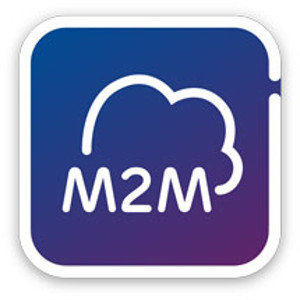
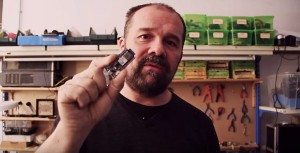

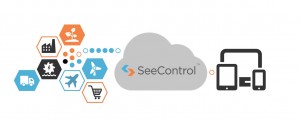 As well as using the APIs to connect with SeeControl, you can also use the extensive libraries in the SeeControl platform. These libraries offer extensive support of open standards and vendor-specific standards for a wide range of embedded devices, sensors and actuators, communication and networking devices and gateways. For example, existing format and protocol adapters are provided for CoAP, MQTT and Modbus, to name just a few.
As well as using the APIs to connect with SeeControl, you can also use the extensive libraries in the SeeControl platform. These libraries offer extensive support of open standards and vendor-specific standards for a wide range of embedded devices, sensors and actuators, communication and networking devices and gateways. For example, existing format and protocol adapters are provided for CoAP, MQTT and Modbus, to name just a few. 
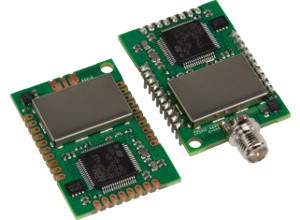
 The latter is more flexible, but because it requires the radio receiver to be kept online listening for new downlink messages all the time, this is the most power-inefficient mode compared to the former scenarios where the radio can be powered down. This is another way that the LoRaWAN protocol helps to maintain strong power efficiency in the endpoint devices.
The latter is more flexible, but because it requires the radio receiver to be kept online listening for new downlink messages all the time, this is the most power-inefficient mode compared to the former scenarios where the radio can be powered down. This is another way that the LoRaWAN protocol helps to maintain strong power efficiency in the endpoint devices.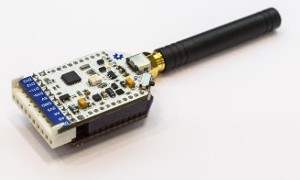 Although the SigFox technology can’t accommodate heavy amounts of Internet data such as streaming media, it is well suited to carrying simple messages in Internet-of-Things and telemetry applications, employing lightweight transport protocols such as MQTT.
Although the SigFox technology can’t accommodate heavy amounts of Internet data such as streaming media, it is well suited to carrying simple messages in Internet-of-Things and telemetry applications, employing lightweight transport protocols such as MQTT.